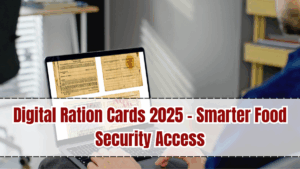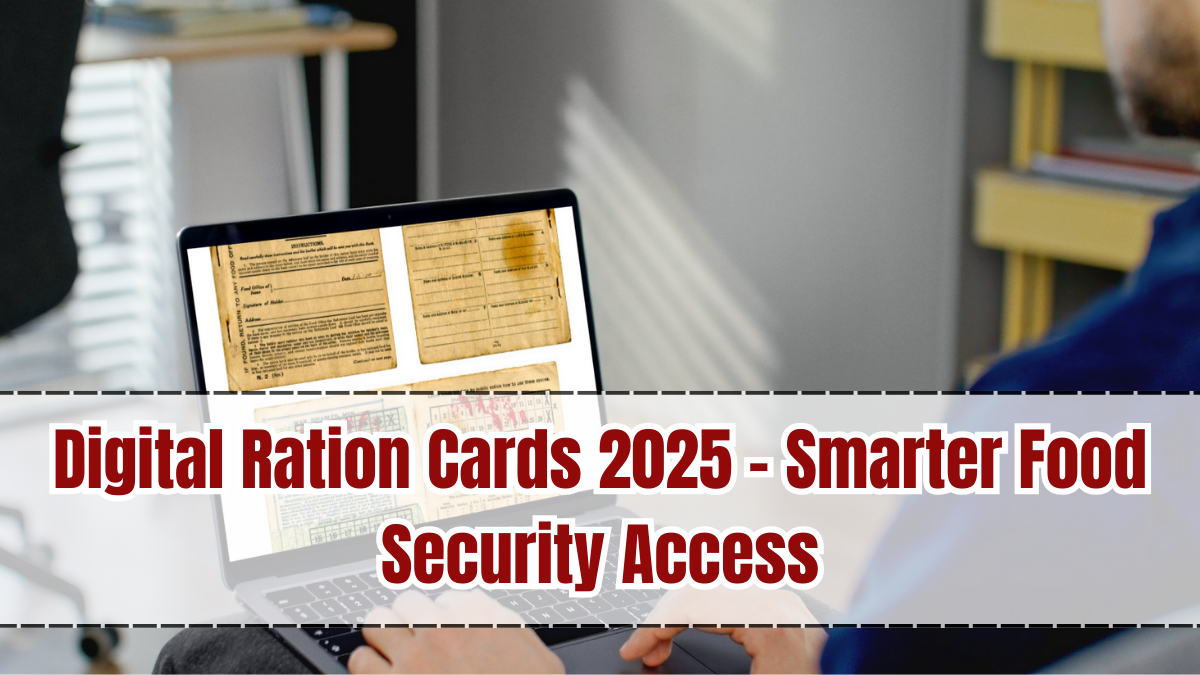Food security is one of the most essential pillars of social welfare, especially in developing nations where millions depend on government-subsidized food supplies. Traditionally, ration card systems have been plagued by inefficiencies, corruption, and duplication of beneficiaries. In 2025, Digital Ration Cards are reshaping the Public Distribution System (PDS) by using technology to ensure transparency, accessibility, and accountability. This new model is helping governments provide smarter and more reliable access to food for citizens.

What are Digital Ration Cards?
A Digital Ration Card is an electronically issued card linked to a citizen’s digital identity, such as Aadhaar in India. Instead of physical paper cards, citizens now receive QR-coded or app-based ration IDs that can be used to access subsidized grains and food supplies from fair price shops.
Key features include:
-
QR codes or biometric verification for identity checks.
-
Real-time tracking of ration distribution.
-
Integration with e-governance databases to eliminate duplicates.
-
Mobile app access for balance checks and updates.
-
Portability across regions, ensuring citizens can claim rations from any registered shop.
Why They Matter in 2025
The shift to Digital Ration Cards 2025 is crucial for making food distribution more efficient. Paper-based ration systems often resulted in fraud, black marketing, and delayed supply. Digital cards, on the other hand, ensure that subsidies reach the rightful beneficiaries without leakage. Moreover, they give citizens greater control by allowing them to check balances, track distribution, and even apply for updates online. This strengthens trust in government programs and promotes food security for vulnerable populations.
Benefits of Digital Ration Cards
The adoption of digital ration systems brings significant improvements:
-
Transparency: Digital tracking prevents corruption and ghost beneficiaries.
-
Accessibility: Citizens can use their cards in any region under a “One Nation, One Ration Card” framework.
-
Efficiency: Faster verification reduces long queues at ration shops.
-
Data-Driven Policy: Governments can analyze real-time usage for better planning.
-
Convenience: Citizens receive SMS or app notifications for ration availability.
These benefits make the food security system stronger, fairer, and more citizen-centric.
Role of Technology
Technology powers the digital ration ecosystem through AI, cloud computing, and biometric systems. AI tools detect fraud patterns and ensure fair distribution. Cloud platforms store citizen data securely, making records accessible across states. Biometric verification through fingerprint or iris scans guarantees that only genuine beneficiaries receive rations. Mobile apps have become the bridge between citizens and the system, offering user-friendly interfaces for accessing information anytime.
Government Initiatives
Governments across the world are implementing digital ration card systems as part of broader e-governance reforms. In India, the “One Nation, One Ration Card” scheme has expanded nationwide, allowing migrants to access food subsidies anywhere in the country. Other nations are adopting similar models by linking digital ration cards with national ID systems. These initiatives are supported by international organizations promoting digital inclusion and food security.
Future of Digital Ration Cards
The future of Digital Ration Cards is closely tied to broader digital governance. By 2030, ration cards may evolve into multifunctional digital IDs that provide access not only to food but also to healthcare, education subsidies, and welfare payments. Blockchain-based ration records could add further transparency, while AI predictive models may help governments forecast demand and prevent shortages. Ultimately, digital ration systems will become a key element of smart governance.
Conclusion
Digital Ration Cards 2025 are modernizing food security systems by making them transparent, efficient, and citizen-friendly. By eliminating fraud and ensuring portability, they are transforming how governments deliver essential resources. As technology continues to evolve, digital ration systems will expand into holistic welfare platforms that guarantee food security and social justice for all. The era of paper-based ration cards is ending, paving the way for smarter, inclusive governance.
FAQs
What are Digital Ration Cards 2025?
They are electronically issued ration IDs linked to digital identity systems, allowing citizens to access subsidized food supplies securely.
How do they improve food distribution?
They prevent fraud, enable portability, and make the Public Distribution System faster and more transparent.
Can citizens use digital ration cards across states?
Yes, under schemes like “One Nation, One Ration Card,” citizens can claim rations from any registered shop nationwide.
What technology powers digital ration cards?
They use AI fraud detection, biometric verification, cloud databases, and mobile apps for secure and efficient operations.
What is the future of digital ration cards?
They will evolve into multifunctional IDs linked with healthcare, education, and welfare schemes, making governance more inclusive.
Click here to know more.
